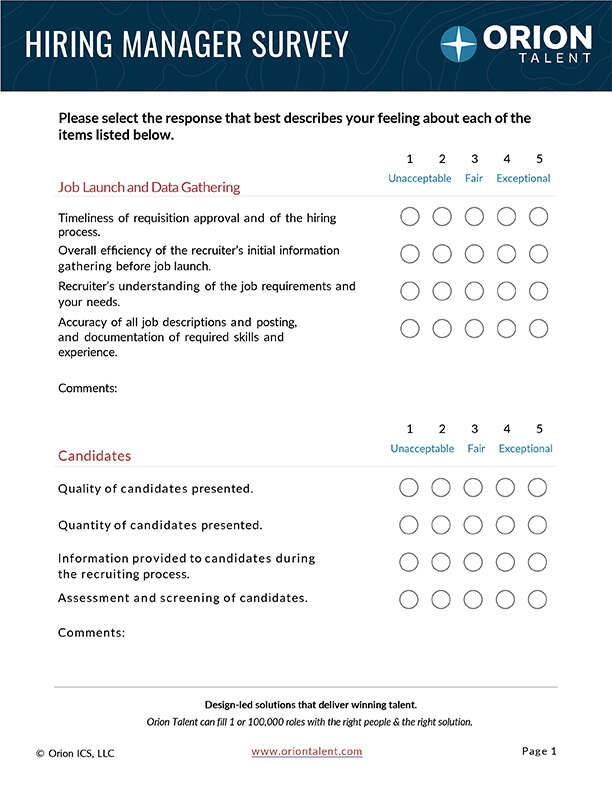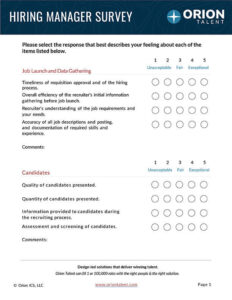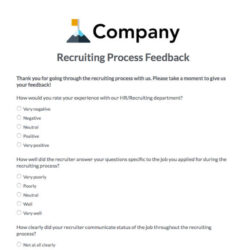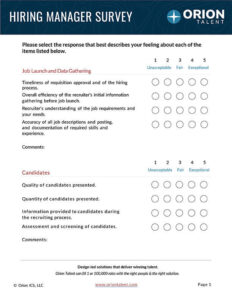In the world of recruitment and HR, few metrics are as vital yet often elusive as the “quality of hire.” It’s not just about filling a vacant seat; it’s about bringing in individuals who truly thrive, contribute significantly, and stick around for the long haul. Ultimately, a high quality of hire directly impacts your company’s productivity, culture, and bottom line. But how do you actually measure something so nuanced and subjective? That’s where a structured approach comes into play, turning guesswork into data-driven decisions.

Understanding the impact of your hiring decisions is critical for continuous improvement in your talent acquisition strategy. Imagine if you could pinpoint exactly what makes a great hire, replicate that success, and avoid costly misfires. A well-designed quality of hire survey template offers precisely that capability, providing a systematic way to gather feedback and insights that inform future recruitment efforts. It helps you move beyond intuition, leveraging concrete data to build a stronger, more effective workforce.
Why Measuring Quality of Hire Is Crucial for Your Organization
Measuring the quality of your hires isn’t just a nice-to-have; it’s a strategic imperative for any organization aiming for sustainable growth and a thriving culture. Think about it: every hiring decision represents a significant investment of time, money, and resources. Without a clear understanding of whether those investments are paying off, you’re essentially flying blind. High-quality hires contribute more, integrate seamlessly into teams, embody company values, and are more likely to stay, reducing turnover costs and increasing overall team efficiency.
Conversely, a low quality of hire can lead to a cascade of negative consequences. We’re talking about disengaged employees, lower productivity, increased training costs for replacements, and potential damage to team morale. It can even impact your employer brand, making it harder to attract top talent in the future. That’s why moving beyond simple “time-to-fill” or “cost-per-hire” metrics is essential. While those are important operational indicators, they don’t tell you anything about the actual value a new employee brings to the table once they’re onboarded.
This is where a dedicated quality of hire survey template becomes invaluable. It provides the framework to collect comprehensive feedback from various stakeholders – the new hire themselves, their manager, and even their peers. By systematically gathering this input, you can identify patterns, understand what went well, and pinpoint areas for improvement in your recruitment, onboarding, and even talent development processes. It transforms an abstract concept into actionable data, allowing you to refine your hiring machine.
Key Elements to Include in Your Quality of Hire Survey
To truly capture the essence of a high-quality hire, your survey needs to touch on several critical aspects. It’s not just about asking if someone is “good”; it’s about understanding *why* they are good and *how* their journey contributes to that assessment. A holistic approach ensures you gather insights across the entire new hire lifecycle. Here are some essential areas and types of questions to consider incorporating:
- **Pre-Hire Metrics & Sourcing Effectiveness:** How did the candidate hear about the role? What was their initial impression of the hiring process? Did the job description accurately reflect the role? Understanding this helps you optimize your sourcing channels and candidate experience.
- **Onboarding Experience:** Was the onboarding process smooth and informative? Did they feel supported in their first weeks? Did they receive the necessary training and resources to succeed? This directly impacts ramp-up time and early engagement.
- **Performance & Productivity (from Manager/Peer Perspective):** How quickly did the new hire become productive? Are they meeting expectations and goals? Do they demonstrate the required skills and competencies? This is often the most direct measure of their contribution.
- **Cultural & Team Fit:** Does the new hire align with company values? Do they collaborate effectively with their team? Do they contribute positively to the team dynamic? A good cultural fit is crucial for long-term retention and team harmony.
- **Retention & Engagement Indicators:** Does the new hire express satisfaction with their role and the company? Do they see a future for themselves within the organization? While not always immediate, early indicators of engagement can predict long-term retention.
Building and Implementing Your Effective Quality of Hire Survey Template
Creating a robust quality of hire survey template involves more than just listing questions; it requires thoughtful planning and execution to ensure you gather meaningful data. Start by defining your specific objectives. What do you want to learn from this survey? Is it about improving your candidate experience, reducing turnover, or enhancing new hire productivity? Your objectives will guide the types of questions you ask and the metrics you prioritize.
Next, consider the timing of your survey. It’s often beneficial to collect feedback at multiple touchpoints to get a full picture of the new hire’s journey. Common timings include 30, 60, and 90 days post-hire. A 30-day survey might focus on onboarding effectiveness and initial impressions, while a 90-day survey could delve deeper into performance, cultural integration, and long-term satisfaction. Asking for feedback too early might not yield enough insights into actual performance, while waiting too long could mean missing critical early challenges.
Identify who needs to provide input. While the new hire’s perspective is invaluable, gaining insights from their direct manager is often the most critical. Managers can provide objective feedback on performance, skill alignment, and team integration. For a more rounded view, consider including input from peers or even key stakeholders they interact with regularly. Ensure anonymity where appropriate, especially for new hire feedback, to encourage honest and candid responses.
Finally, the most crucial step after deploying your quality of hire survey template is to actually use the data. Analyzing the responses allows you to identify trends, pinpoint areas of strength, and uncover weaknesses in your hiring process. Don’t just collect the data; interpret it and translate it into actionable strategies. For instance, if surveys consistently show issues with onboarding clarity, you know exactly where to focus your improvements. This iterative process of surveying, analyzing, and acting is what truly elevates your talent acquisition efforts, ensuring every new hire contributes positively to your organization’s success.



